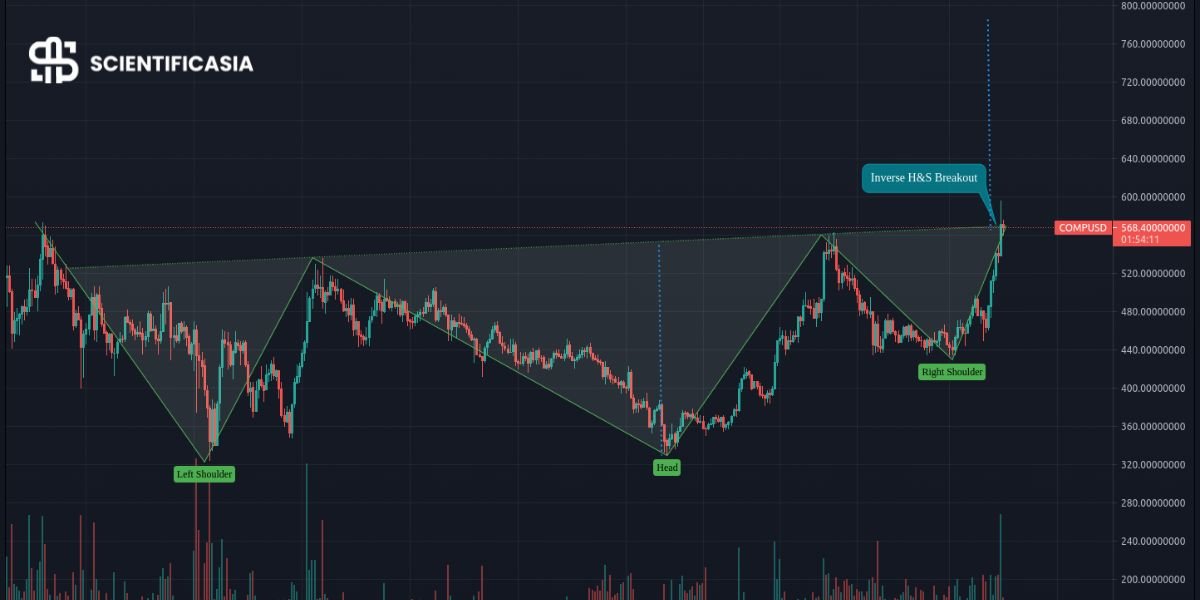Key Takeaways:
- Asia is a global epicenter for cryptocurrency adoption and innovation, significantly influencing the global financial landscape.
- FTAsiaEconomy serves as a vital source of information, analyzing and reporting on these rapidly evolving trends.
- Understanding the key drivers, inherent challenges, and emerging opportunities is crucial for navigating the dynamic Asian crypto market.
- The future of cryptocurrency in Asia appears promising, with continued growth, innovation, and increasing mainstream acceptance on the horizon.
Definition and Basics of Cryptocurrency:
Cryptocurrency is a digital or virtual currency that employs cryptographic techniques to secure transactions and control the creation of new units. Unlike traditional fiat currencies issued and regulated by central banks, cryptocurrencies operate on decentralized networks, most commonly based on blockchain technology. This decentralized nature is a core characteristic, offering potential advantages such as increased transparency, faster transaction speeds, and reduced transaction fees. Bitcoin, Ethereum, and numerous other digital assets have achieved mainstream recognition, and FTAsiaEconomy crypto trends reflect this growing adoption, particularly within the Asian market.
The Role of Cryptocurrency in the Financial Market:
The rise of cryptocurrency has significantly impacted the financial sector. Digital assets offer an alternative to traditional banking systems, facilitating fast, transparent, and often more cost-effective transactions, especially for cross-border payments. Furthermore, cryptocurrencies function as investment assets, enabling trading and providing potentially lucrative opportunities for investors in Asia and globally. This has led to increased participation in financial markets and greater accessibility for some populations.
The Impact of Cryptocurrency on the Asian Economy:
Asia has emerged as a leader in cryptocurrency adoption, with countries like China, Japan, South Korea, and Singapore playing crucial roles in its development and shaping FTAsiaEconomy crypto trends. This reflects the continent’s increasing reliance on digital assets for various purposes, including financial inclusion, remittances, and cross-border transactions. The rapid adoption is driven by a confluence of factors, including tech-savvy populations, high mobile penetration, and a desire for alternative financial solutions.
Cryptocurrency and Asian Economic Growth:
The adoption of cryptocurrency has contributed to Asia’s economic growth by:
- Stimulating Innovation in Blockchain Technology: The rise of cryptocurrency has spurred significant investment and innovation in blockchain technology, with applications extending far beyond just currency.
- Expanding Financial Services to the Unbanked: Cryptocurrencies offer the potential to provide financial services to populations previously excluded from traditional banking systems, fostering greater financial inclusion.
- Attracting Foreign Investments: The burgeoning crypto market in Asia has attracted substantial foreign investment in crypto startups, exchanges, and related ventures, contributing to economic growth.
- Enhancing Cross-Border Trade Efficiency: Cryptocurrencies can streamline cross-border transactions, reducing costs and delays associated with traditional methods, thereby boosting international trade.
Current Trends in Cryptocurrency in Asia:
Several key trends are defining crypto updates FTAsiaEconomy reports on, including:
- Increased Government Regulations: Governments across Asia are increasingly implementing regulations to mitigate risks, protect investors, and ensure market integrity. This is leading to a more structured and regulated market environment.
- Central Bank Digital Currencies (CBDCs): Several Asian nations, notably China and India, are actively exploring and piloting their CBDCs, which could potentially revolutionize the financial landscape.
- Institutional Adoption: Major banks and enterprises are gradually adopting cryptocurrencies, offering services like custody solutions and integrating crypto payments, driving further mainstream acceptance.
- Decentralized Finance (DeFi) Growth: The DeFi sector is experiencing rapid growth, enabling users to lend, borrow, and trade crypto assets without intermediaries, creating new financial opportunities.
- NFTs and the Metaverse: Non-fungible tokens (NFTs) and the metaverse are creating new revenue streams for businesses and artists, with Asia at the forefront of these developments.
Recent Developments in FTAsiaEconomy Crypto Trends:
The Asian crypto market has witnessed several significant recent developments, often highlighted by FTAsiaEconomy:
- Japan’s Regulatory Framework: Japan has established a regulatory framework for stablecoins and crypto exchanges, providing greater clarity and stability to the market.
- China’s Digital Yuan Expansion: China’s digital yuan (e-CNY) is undergoing continuous expansion, integrating CBDCs into various aspects of the financial system.
- Singapore’s Pro-Crypto Stance: Singapore’s welcoming regulatory environment has attracted numerous blockchain firms and solidified its position as a crypto hub.
- South Korea’s Taxation Policies: South Korea has implemented taxation policies on crypto transactions, bringing greater transparency to the market.
- India’s Evolving Stance: India’s regulatory approach to cryptocurrencies has seen fluctuations, reflecting the ongoing debate surrounding digital asset regulation.
Key Drivers of FTAsiaEconomy Crypto Trends in Asia:
Several factors contribute to the growth of the Asian crypto ecosystem, as reported by FTAsiaEconomy:
- Technological Advancements: Continuous advancements in blockchain technology and smart contracts are driving innovation and expanding the potential applications of cryptocurrencies.
- Investor Interest: Increased investor interest in digital assets as alternative investments is fueling market growth.
- Government Initiatives: Supportive government initiatives in some Asian countries are fostering blockchain innovation and creating a favorable environment for crypto businesses.
- Mobile Banking Adoption: High mobile banking adoption rates in Asia facilitate easy access to crypto trading platforms, expanding market reach.
- Economic Factors: Concerns about rising inflation and currency devaluation in some regions are driving demand for stablecoins and cryptocurrencies like Bitcoin as a hedge against inflation.
Challenges in FTAsiaEconomy Crypto Trends:
Despite the rapid growth and opportunities, the cryptocurrency market in Asia faces several challenges, often highlighted by FTAsiaEconomy:
- Regulatory Uncertainty: Regulatory uncertainty in some countries creates challenges for businesses and investors, hindering growth and innovation.
- Security Concerns: Security breaches, hacking incidents, and fraud remain significant concerns in the crypto space, impacting investor confidence.
- Market Volatility: The inherent volatility of cryptocurrency prices can pose significant risks for investors, making it crucial to exercise caution.
- Public Awareness: Limited awareness and understanding of cryptocurrencies among the general public can hinder wider adoption.
- Banking Restrictions: Difficulties in conducting fiat-to-crypto transactions due to banking restrictions in some regions can pose challenges for market participants.
Opportunities in FTAsiaEconomy Crypto Trends:
The Asian crypto market presents numerous opportunities, as reported by FTAsiaEconomy:
- Blockchain Adoption: The wider adoption of blockchain technology across various industries, including supply chain management, logistics, and finance, presents significant opportunities.
- Favorable Policies: Further development of crypto-friendly policies in countries like Singapore and Japan can attract more businesses and investment.
- DeFi Expansion: Continued growth in DeFi applications can provide innovative financial services and expand access to financial products.
- Web3 and Metaverse: The emergence of Web3 and the metaverse offers new opportunities for businesses and creators, with cryptocurrencies playing a key role.
- Integration with AI: Integration of artificial intelligence and machine learning in crypto analytics and trading can enhance efficiency and decision-making.
Future of FTAsiaEconomy Crypto Trends:
The future of crypto updates FTAsiaEconomy reports on looks promising, with several potential advancements:
- Stronger Regulatory Frameworks: The development of stronger and clearer regulatory frameworks is expected to lead to greater mainstream acceptance and increased investor confidence.
- Institutional Investment: Greater institutional investment is likely to boost market stability and liquidity, attracting more participants.
- Scalability Solutions: Improvements in blockchain scalability solutions will enhance efficiency and transaction speeds, addressing a key challenge for wider adoption.
- Tokenized Assets: The rise of tokenized assets, representing real-world assets on the blockchain, can unlock new investment opportunities and increase market liquidity.
- Stablecoin Adoption: Increased adoption of stablecoins can reduce reliance on volatile cryptocurrencies and facilitate smoother transactions.
FAQs:
Why is cryptocurrency important in Asia?
Asia’s large tech-savvy population, supportive regulatory frameworks in some regions, and increasing demand for financial innovation have made it a global leader in cryptocurrency adoption.
How are Asian governments regulating cryptocurrencies?
Regulations vary significantly across Asian countries. Some have embraced a pro-crypto stance, while others have implemented stricter controls or even bans. FTAsiaEconomy provides detailed updates on these regulatory developments.
What are the risks of investing in cryptocurrency in Asia?
Investors face risks such as regulatory changes, market volatility, cyber threats, and the potential for fraudulent activities. Thorough research and risk management are essential.
How can businesses leverage cryptocurrency in Asia?
Businesses can integrate cryptocurrency for payments, utilize blockchain for supply chain management, and explore opportunities in DeFi and NFT markets.
What are the top cryptocurrencies influencing FTAsiaEconomy?
While Bitcoin and Ethereum remain dominant, other cryptocurrencies such as Binance Coin, Tether, and Solana also play significant roles in the Asian market. FTAsiaEconomy provides insights into the performance and trends of various cryptocurrencies.
Final Thoughts:
FTAsiaEconomy crypto trends indicate that Asia will continue to play a dominant role in shaping the future of the global cryptocurrency market. Despite regulatory hurdles and other challenges, the region presents significant opportunities for investors, businesses, and policymakers. Staying informed about crypto updates FTAsiaEconomy provides is crucial for anyone seeking to navigate this dynamic and rapidly evolving industry successfully. The future of cryptocurrency in Asia is bright, with ongoing innovations and increasing adoption paving the way












